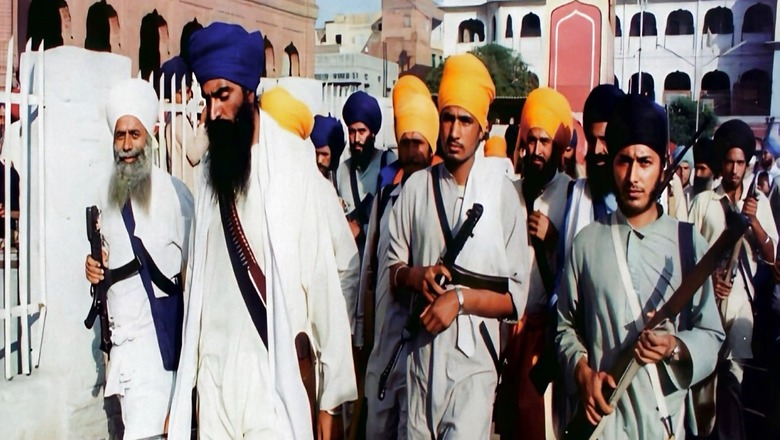
views
Punjab is in a state of crisis as there has been a series of violent incidents that have rocked the trust and faith of the people in its law-and-order machinery. The most telling example is the broad daylight attack on a police station in Amritsar recently. The lame-duck response of the state government reminds one of the late 1970s and early 1980s when a similar approach had resulted in the rise of separatist leader Sant Jarnail Singh Bhindranwale.
There seems to be a macabre similarity between the developments in that era and the present-day state of affairs in the state ever since the Aam Aadmi Party (AAP) has come to power. It is important to go back and take a relook at what happened in Punjab during the late 1970s and early 1980s because as US thinker George Santayana had said, “Those who cannot remember the past are condemned to repeat it.”
In 1977, the Congress decided to nurture Bhindranwale to counter the Akali Dal-led coalition which had replaced Congress rule in the state. Congress leader Zail Singh and Indira Gandhi’s son Sanjay Gandhi were driving this political gameplan with full support from Mrs Gandhi.
There are two significant events where the law and order machinery and the politicians failed and compromised beyond a limit. This helped Bhindranwale to create enormous clout for himself. Not only Punjab but the whole country paid a huge price for this oversight of the political leadership and the law and order establishment.
Clash with Nirankaris on 13 April 1978
The Akali Dal in the Punjab government had allowed Nirankaris to hold a convention in Amritsar. Nirankaris are considered to be a heretical sect by many Sikhs. Hence this decision of the Akali Dal government didn’t go down well with Sikhs. On 13 April 1978, an Akali Dal government minister Jeevan Singh Umaranagal was trying to explain his government’s position to an agitated Sikh congregation at Golden Temple in Amritsar when Bhindranwale announced that he wouldn’t let this convention happen.
Mark Tully and Satish Jacob have given an authoritative account of the subsequent developments in Amritsar: Mrs Gandhi’s Last Battle, “Bhindranwale stood up and shouted, ‘We will not allow this Nirankari Convention to take place. We are going to march there and cut them to pieces…Bhindranwale and an agricultural inspector of the Punjab government called Fauja Singh, then marched out of the Temple at the head of a procession shouting slogans against the Nirankaris.”
Along the two-mile route to ‘Nihangon ka Bunga’ where this procession was headed, there was violence on the way but the police remained a mute spectator. ‘When the Sikhs reached the convention, Fauja Singh drew his sword and swiped at the neck of Nirankari Guru, Baba Gurbachan Singh. One of the bodyguards shot Fauja Singh dead, and a battle broke out in which twelve Sikhs and three Nirankaris were killed. The twelve Sikhs became martyrs and Sanjay Gandhi and Zail Singh had the issue they needed.The Congress publicity machine projected Bhindranwale as the hero of the attack on Nirankari convention.’
This also led to the birth of Dal Khalsa with Congress’ support. Dal Khalsa was the key votary of Khalistan. It is on record that the hotel bill for the first meeting of Dal Khalsa, where the establishment of Khalistan was discussed, was paid by Zail Singh.
In 1980, the Akali Dal government in Punjab was dismissed after Indira Gandhi came back to power at the Centre. The Congress returned to power in fresh Assembly elections. Darbara Singh, an arch-rival of Zail Singh was made Chief Minister of Punjab. On the other hand, Zail Singh was rewarded with the Home Ministry at the Centre.
GBS Sidhu, a former officer with Research and Analysis Wing (RAW), mentions in The Khalistan Conspiracy, “Darbara Singh was secular in his politics while Zail Singh not only tolerated communal forces but also compromised with them. He had no qualms about adopting a communal agenda to further both his own and the Congress Party’s interests.” Zail Singh backed Bhindranwale to counter Darbara Singh and that had huge implications in the long run.
Chando Kalan episode
On 9 September 1981, Lala Jagat Narain, owner and editor of the newspaper ‘Punjab Kesari’ was shot dead near Ludhiana. Narain was highly critical of Bhindranwale in his editorials. Bhindranwale along with his two associates were named in the FIR. A Punjab Police team went to arrest him at village Chando Kalan in the Hisar district of Haryana where Bhindranwale was on a preaching mission. Sidhu gives an elaborate account of what followed subsequently “Tipped off suitably, Bhindranwale had already left Chando Kalan with some of his supporters and had headed for his headquarters, Gurudwara Darshan Prakash, Chowk Mehta.”
Bhindranwale travelled over 300 km through Haryana and Punjab and reached Chowk Mehta on the night of September 13-14 September 1981. He wasn’t stopped at any check post on the way as the then Union Home Minister Zail Singh had himself called the Haryana Chief Minister Bhajan Lal and told him not to arrest Bhindranwale. In fact, one the senior police officers told Satish Jacob that an official car was sent by Haryana Chief Minister to drive Bhindranwale back to his Gurudwara at Chowk Mehta.
According to Sidhu, “My batchmate Diwakar Das Gupta (IPS, 1964 batch, Madhya Pradesh cadre) who was DIG (Deputy Inspector General) at BSF (Border Security Force) headquarters in New Delhi had told me at that time that their force tried to stop Bhindranwale at each of their check posts but he received instructions from the home minister’s office to let Bhindranwale pass unhindered.”
Later Bhindranwale was arrested in this case from his gurdwara but that was also a façade. The Punjab Police meekly surrendered to the terms and conditions put by him. Before the arrest, he gave a fiery speech against the Punjab government to a religious congregation. This led to his followers opening a fire that killed 11 people.
Ironically on 15 October 1981, less than a month after Bhindranwale’s arrest, Zail Singh told Parliament that there was no evidence that he was involved in the killing of Lala Jagat Narain. The government released him from prison and he celebrated his release in Delhi with his supporters openly flouting arms in their victory procession on Delhi roads.
According to Sidhu, “There was considerable evidence to suggest that Bhindranwale’s release was ordered by the Home Minister himself.” However, a senior Congress politician from Punjab told Satish Jacob, ‘It was Mrs Gandhi herself who actually ordered the Sant’s release.’ This was confirmed by a family member of the Delhi Sikh Gurdwara Management Committee(DSGMC), who told Mark Tully, ‘Santokh Singh himself went and pleaded with Mrs Gandhi for Bhindranwale’s release, threatening that it would not be possible to keep the DSGMC loyal to the Congress if Bhindranwale was not set free.’
‘Bhindranwale’s arrest from Chowk Mehta and his subsequent release in fact helped raise his profile as an important leader of the Sikh community in Punjab and granted him the status of a hero. Bhindranwale himself said after his release that the government had done more for him through his arrest than he could have achieved in years.’
The present state of affairs in Punjab and the series of incidents that have happened since the Aam Aadmi Party took over the reins of the state government reminds one of this anecdotal history. The question is whether we would learn from the past so that we aren’t condemned to repeat it.
The writer, an author and columnist, has written several books. He tweets @ArunAnandLive. Views expressed are personal.
Read all the Latest Opinions here













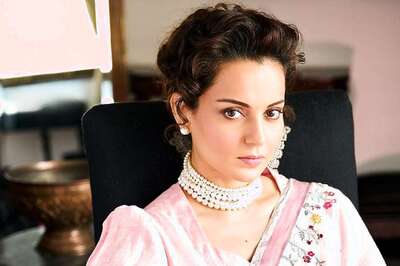

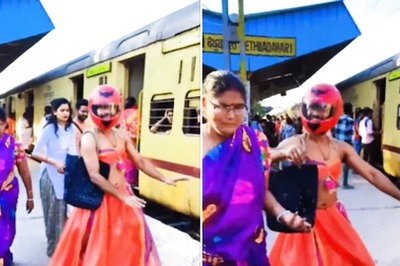
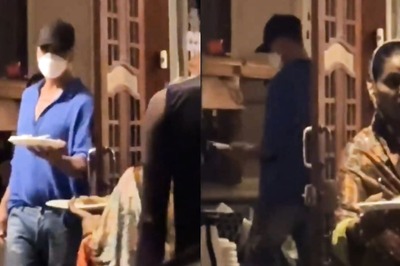

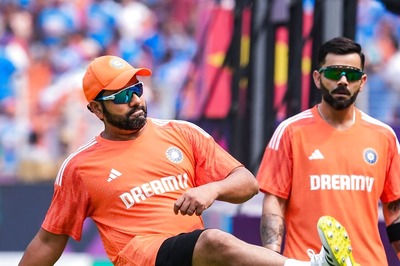

Comments
0 comment